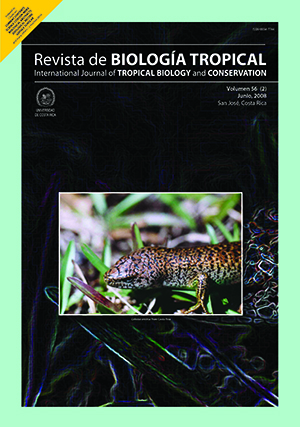Abstract
The first cellular line of Aedes aegypti was developed by Grace in 1966; afterwards, other cellular lines of this species have been generated. These have been used for the study of pathogenic organisms like viruses, bacteria and parasites, which demon-strates their importance in biomedical applications. This research describes, for the first time, some cytochemical characteristics of A. aegypti cell cultures, that were infected with (MHOM/CO/87CL412) strain of Leishmania panamensis. A morphological study of the cell culture was also carried out. Maintenance of the cell culture, parasites and infection in vitro were carried out in the Laboratory of Entomology, Cell Biology and Genetics of the Universidad de La Salle. The cell cultures infected with the parasite were maintained in a mixture of mediums Grace/L15, supplemented with 10 % fetal bovine serum (FBS) at pH 6.8 and a temperature of 26 ºC, during 3, 6 and 9 post-infection days. After this, these cell cultures were processed through High Resolution Light Microscopy (HRLM) and Transmission Electron Microscopy (TEM) based on standard protocols defined by the Group of Microscopy and Image Analyses of the Instituto Nacional de Salud. Semi-fine slices of 1 μm colored with toluidine blue were used for the morphological analysis of the culture, and ultra fine cuts of 60 to 90 nm stained with uranyl acetate and lead citrate where used for the ultrastructural study. In addition, PAS and peroxidase staining was carried out in cells fixed with methanol. The morphometric study was analyzed with software ImageJ (NIH). In the semi-fine slices, small cells were observed showing fibroblastic appearance 10.84±2.54 μm in length and 5.31±1.26 μm wide; other cells had epithelial appearance with a great peripheral nucleus, voluminous and vacuolated cytoplasm, 23.04±4,00 μm in length and 13.96±3.70 μm wide. These last ones predominated over the ones with fibroblastic appearance. Regarding the PAS coloration, 7.08 % of the cells presented abundant PAS positive cytoplasmatic granules which indicated polysaccharides presence. The peroxi-dase test gave a negative result. The greatest percentage of infection (18.90 %) of one total of 101 cells, turned up by day 6. Some cells analyzed by TEM presented a vacuolated aspect cytoplasm; some contained parasites, other fibrillar material and others were empty. The results indicate that A. aegypti cell culture can support the internalization and transformation of the parasite, which demonstrates the capacity that these cell cultures have to be infected with L. panamensis and to maintain the infection for approximately one week.
Comments

This work is licensed under a Creative Commons Attribution 4.0 International License.
Copyright (c) 2008 Revista de Biología Tropical






